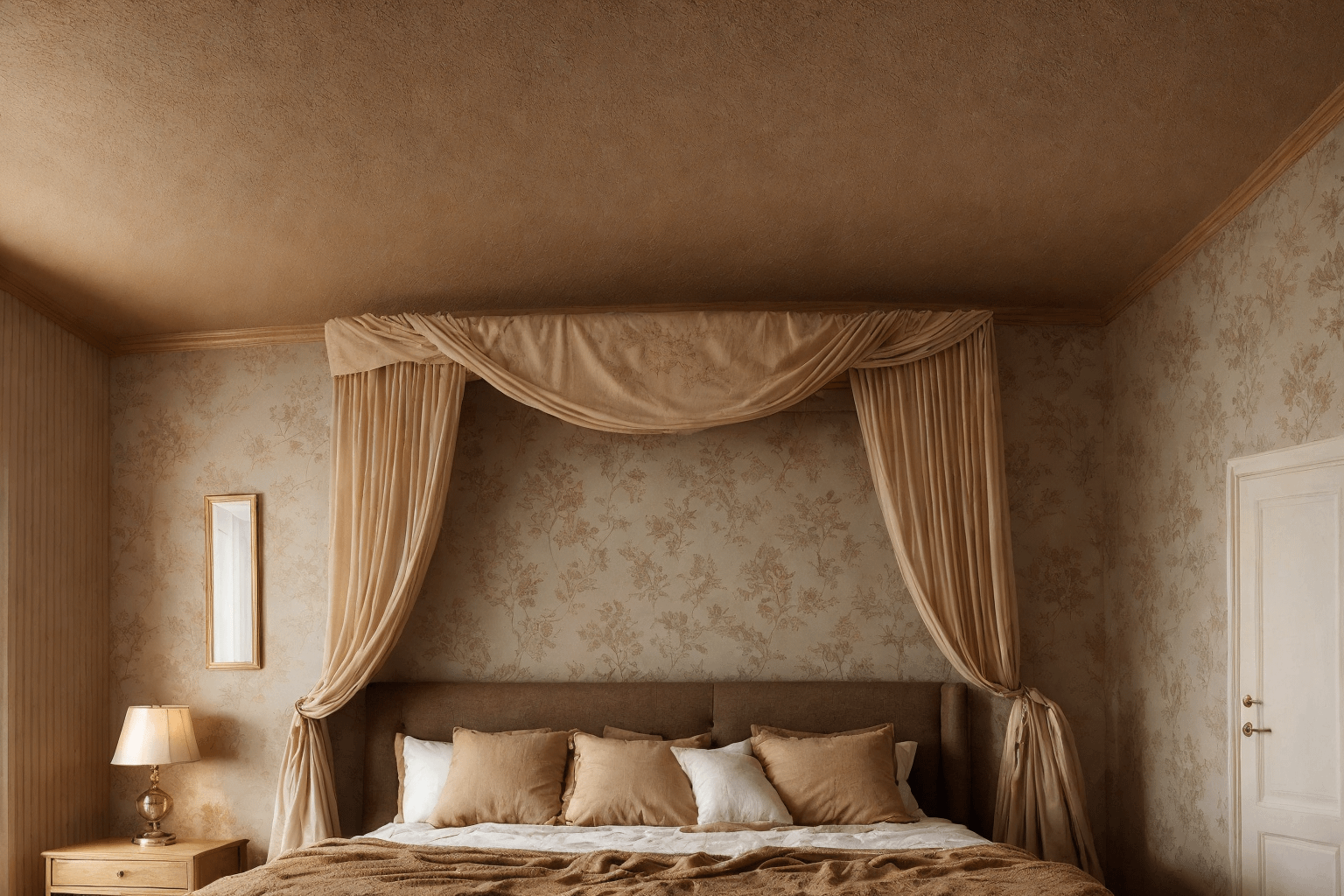Table of Contents
Are you looking for some fabulous bedroom fall ceiling designs to make your space truly stand out? You’ve come to the right place. Fall ceilings are a wonderful way to add a sense of sophistication and depth to any room, and they are especially stunning in the bedroom. With a wide variety of styles and materials to choose from, fall ceilings can complement any bedroom decor, from minimalistic to opulent.
In this article, I want to share a few ideas I’ve come across that, in my opinion, can really transform a bedroom. I’ve always believed that the ceiling is one of the most overlooked areas in a room, even though it plays such a big role in the overall feel of the space. Adding some visual interest up there can make everything else feel more intentional, more “put together” — even if the rest of the room is quite simple.
What’s the point of a fall ceiling in a bedroom?
To me, it’s all about layers and atmosphere. A well-designed fall ceiling adds dimension to the room. It draws your eyes upward, making the space feel bigger and more luxurious.
It’s not just about aesthetics either — you can also use a fall ceiling to hide wiring or improve acoustics slightly, depending on the materials.
Tray Ceiling
Out of all the fall ceiling designs I’ve looked into, the tray ceiling is probably the one I find the most versatile and subtle. It doesn’t scream for attention, but it quietly elevates the entire room — quite literally. The recessed center creates a soft illusion of depth that can completely change the atmosphere of a bedroom. I’ve always been drawn to that feeling of layered space — it somehow makes the room feel more peaceful and grounded, without needing a full renovation.
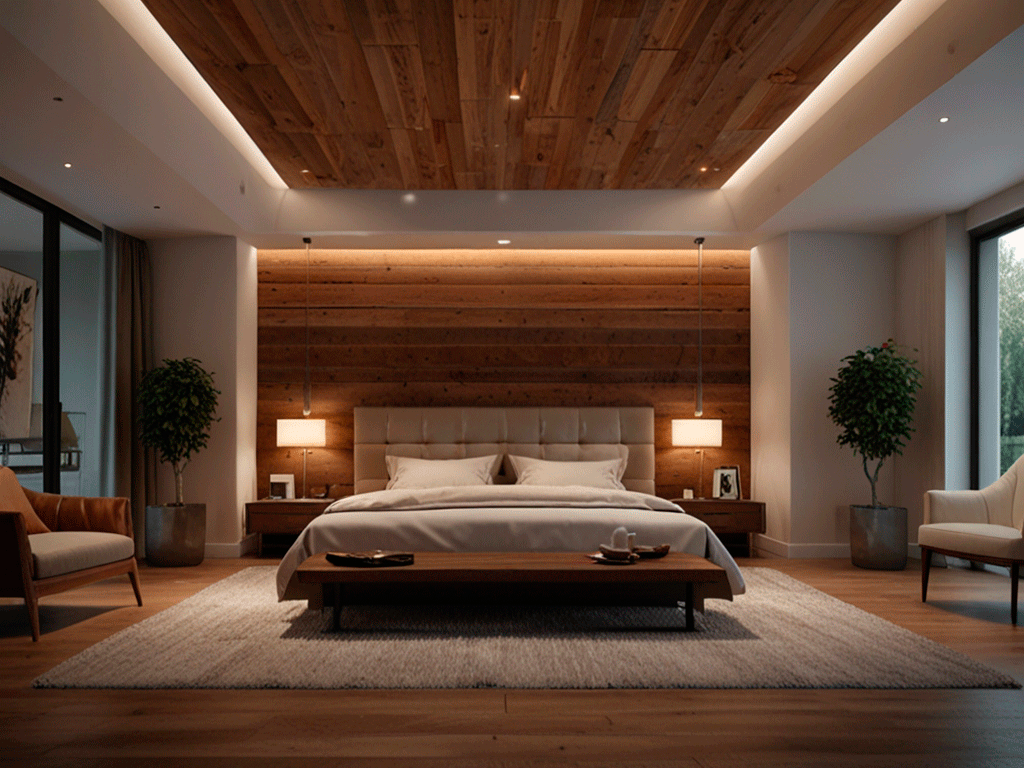
What I especially like about tray ceilings is how adaptable they are to different decor styles. If your bedroom has a modern feel, you can keep the lines crisp, the paint neutral, and even add a bit of indirect LED lighting along the recess to give it a soft glow in the evenings. That kind of ambient lighting makes a huge difference — it turns a plain room into a calming retreat. On the other hand, if you’re more into rustic or farmhouse decor, using reclaimed wood in the ceiling detail can add warmth and texture in a way that feels really natural and cozy.
That said, I’ve noticed that tray ceilings can feel a bit out of place in very small rooms with low ceilings. In those cases, the depth effect might end up making the space feel tighter rather than more open. Also, if you’re thinking of combining it with pendant lighting, be mindful of the scale — a fixture that’s too large or intricate might overpower the design rather than enhance it.
Can you install a tray ceiling in a room with low ceilings?
Technically, yes, but I’d think twice before doing it. The recessed area can visually lower the ceiling if not done carefully. If your bedroom already feels a bit compact, a flat ceiling with strategic lighting might be a better choice.
Does a tray ceiling help with acoustics?
Not in a major way, but depending on the materials used, it can slightly improve how sound behaves in the room — especially if you use wood or soft finishes that absorb sound better than flat, hard surfaces.
Tin Ceiling
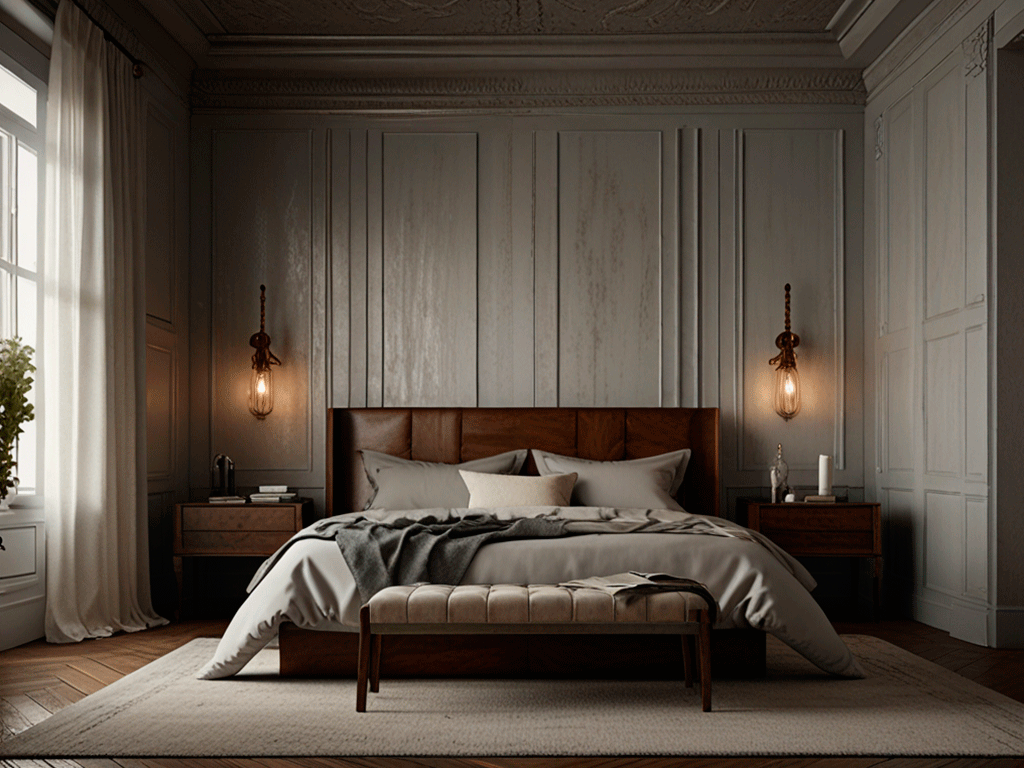
I used to think tin ceilings were only for old cafes or vintage parlors — the kind of thing that belongs in a black-and-white movie. But the more I’ve looked into bedroom ceiling ideas, the more I’ve come to appreciate the character and charm that tin can bring to a space. It’s one of those design elements that’s unexpectedly bold but still manages to feel timeless.
What surprised me most is how many different styles and finishes are available now. You don’t have to stick to the old silver or bronze tones (unless that’s your vibe). There are matte blacks, soft whites, and even brushed copper versions that can either stand out or blend in depending on the effect you’re after. If you go for something textured with an intricate pattern, it can almost act like an art piece overhead — drawing the eye upward and giving the room an extra layer of depth.
Personally, I think tin ceilings work best when they’re paired with bedroom furniture that has a classic or slightly antique feel — things like carved wood nightstands, iron bed frames, or even soft linen curtains. That mix of textures really brings out the ceiling’s details. But I also understand they’re not for everyone. If your style leans ultra-modern or minimal, a tin ceiling could potentially clash unless you find a really understated finish.
One thing to keep in mind is the acoustics. Tin can reflect sound more than softer materials, so if your bedroom echoes a bit already, you might want to balance it with rugs or upholstered furniture.
Are tin ceilings hard to maintain?
Not really. Most come pre-finished or coated, so they don’t rust or tarnish easily. A quick dusting now and then is usually enough — just avoid using anything too abrasive.
Can I install a tin ceiling myself?
If you’re handy and confident working overhead, it’s possible. But since tin panels can be a bit tricky to align perfectly, many people (myself included) might prefer to call in a pro, especially for larger rooms.
Coffered Ceiling
If you want to achieve a truly regal look for your bedroom, a coffered ceiling can be the answer. This stunning architectural feature creates a series of rectangular recesses in the ceiling, giving the appearance of a grid-like pattern. What I find interesting about coffered ceilings is how they immediately elevate a room, even without extravagant decor. It’s one of those elements that speaks for itself—subtle, but undeniably sophisticated.
In my experience, this design works best in spaces with higher ceilings, where the depth and structure have room to breathe. Otherwise, it can feel a bit too heavy or cramped. When done right, though, the effect is dramatic in the best possible way. Using wood with a glossy finish can add warmth and luxury, especially when paired with rich fabrics, deep colors, or even something as simple as brass accents.
What I like most about coffered ceilings is their versatility. You can go for a bold, intricate pattern if you want a focal point, or stick to a simpler design for a more understated charm. Either way, it’s a thoughtful addition that can give your bedroom that quiet “wow” factor—something that feels both timeless and intentional.
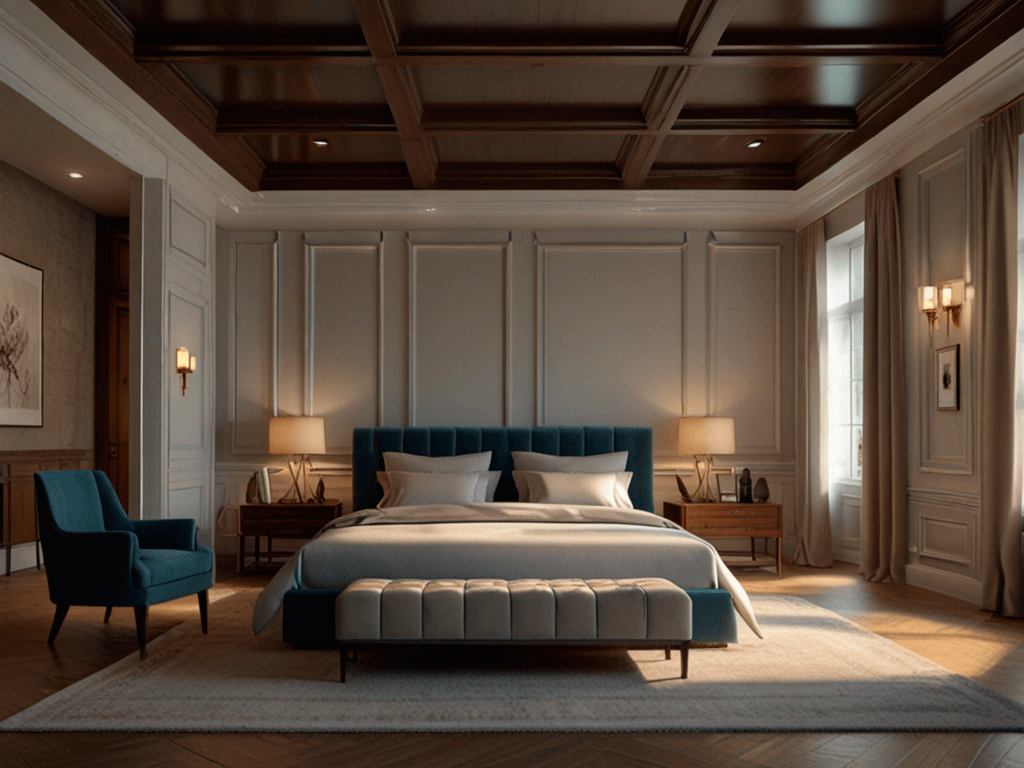
Faux Beams
If you’re looking for a more charming and informal look for your bedroom, faux beams can be an excellent choice. I’ve always found something really comforting about the visual warmth that beams bring to a space—especially when the goal is to make a room feel relaxed and lived-in. Faux beams are a great way to get that effect without having to deal with the structural limitations or high cost of real timber.
One of the things I like most about faux beams is how flexible they are. They’re available in a range of materials like polyurethane, MDF, or even lightweight foam, and they often come in finishes that mimic aged wood surprisingly well. Personally, I’m drawn to rustic finishes with visible grain or slight imperfections—those little details that make a room feel less polished but more personal.
They’re also relatively simple to install, especially compared to real beams, which can be heavy and require structural support. Whether you’re doing a full ceiling treatment or just adding a couple of beams as an accent, it’s a DIY-friendly option that won’t turn into a major renovation project.
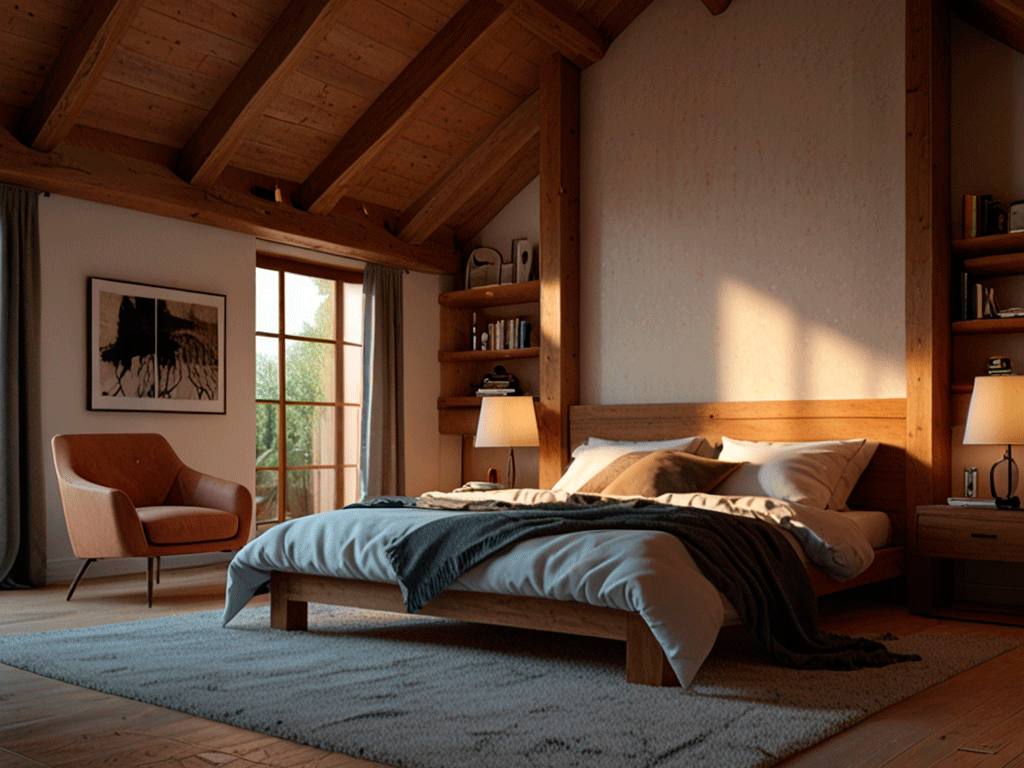
What’s even better is how easily faux beams can blend into different styles. You can keep things cozy with farmhouse elements like soft lighting and neutral colors, or go for something more eclectic by combining them with vintage decor and textured materials like woven rugs and linen curtains. It’s all about layering details that make you feel at ease in your space.
What are faux beams made of?
Faux beams are typically made from lightweight materials such as polyurethane, foam, or engineered wood. These materials make them easy to handle and install while still offering the visual appeal of natural wood.
Do faux beams look realistic?
Many do. The best faux beams are designed with realistic textures and finishes that mimic reclaimed wood or rough-cut lumber. From a distance—and often even up close—they can be very convincing.
Can faux beams be painted or stained?
Yes, depending on the material, you can usually paint or stain them to match your bedroom’s color scheme. Just be sure to use the right products for the beam’s surface.
Are they suitable for low ceilings?
Definitely. Faux beams are often used in rooms with lower ceilings because they’re lightweight and come in smaller dimensions, making them easier to adapt without overwhelming the space.
Fabric Ceiling
A fabric ceiling can add a touch of elegance to any bedroom, especially when you’re working with low ceilings. This type of fall ceiling features a soft, draped fabric that covers the entire ceiling, creating a cozy and intimate ambiance. If you’re aiming for a romantic vibe, choosing a light, airy fabric can enhance the dreamy feel of the room. On the other hand, if you’re leaning towards a more opulent atmosphere, a rich and luxurious material can elevate the space to a whole new level of elegance.
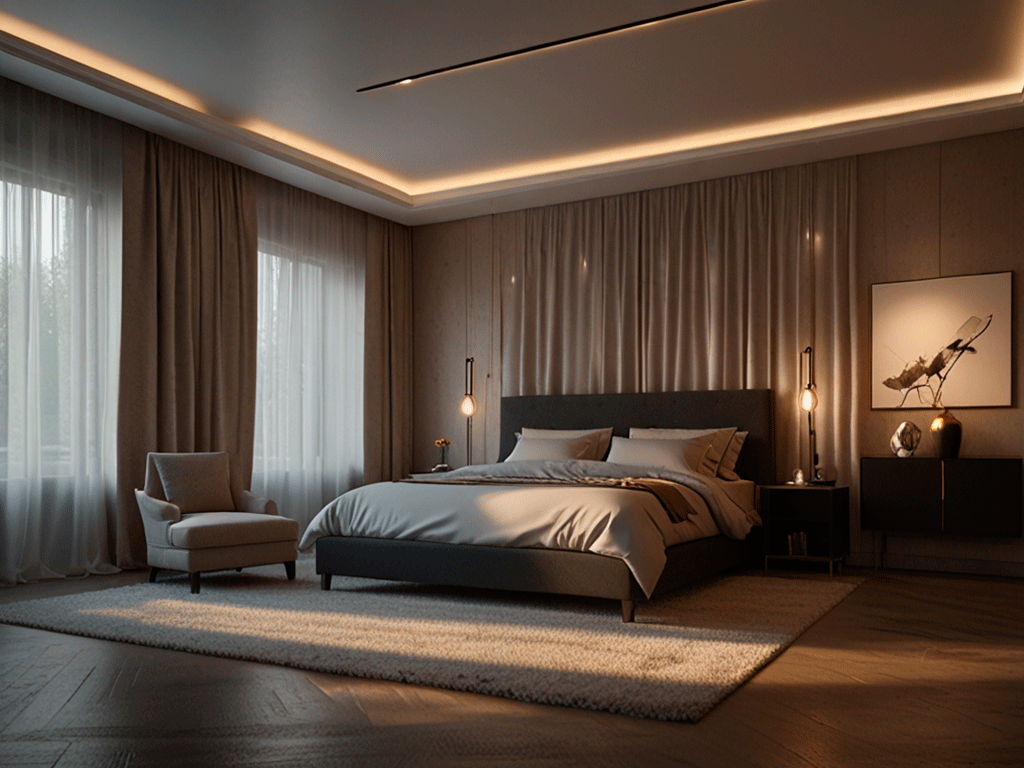
Personally, I find fabric ceilings to be an interesting way to create a softer, more inviting atmosphere in the bedroom. The textures can make the room feel warmer and more welcoming. I would suggest pairing the fabric with light, ethereal decor for a balanced, airy look. However, it’s important to consider the maintenance aspect of fabric ceilings, as they may collect dust or require occasional cleaning. It’s also worth mentioning that this style might not suit every design preference, but it can definitely be a unique, chic addition to the right room.
No matter what kind of look you’re going for, fall ceilings are a wonderful way to add a sense of luxury and style to your bedroom. With so many options to choose from, you’re sure to find the perfect design to make your space truly stand out. From tray ceilings to fabric coverings, the possibilities are endless. So why wait? Start exploring today and find the perfect fall ceiling design for your dreamy bedroom.
Keep exploring home and garden ideas: related articles:
10 Genius Pantry Organization Ideas to Keep Your Kitchen Clutter-Free
Ultimate Guide to Organization for Pantry: Tips and Tricks for a Clutter-Free Space
Top 9 Bathroom Décor Ideas for a Stylish and Functional Space
Dive into the World of Durian Furniture: A Guide to Stylish and Durable Pieces
Can You Use Garden Soil in Raised Beds with Vermiculite for a Raised Garden?
Frequently Asked Questions
What’s the point of a fall ceiling in a bedroom?
To me, it’s all about layers and atmosphere. A well-designed fall ceiling adds dimension to the room. It draws your eyes upward, making the space feel bigger and more luxurious.
Can you install a tray ceiling in a room with low ceilings?
Technically, yes, but I’d think twice before doing it. The recessed area can visually lower the ceiling if not done carefully. If your bedroom already feels a bit compact, a flat ceiling with strategic lighting might be a better choice.
Does a tray ceiling help with acoustics?
Not in a major way, but depending on the materials used, it can slightly improve how sound behaves in the room — especially if you use wood or soft finishes that absorb sound better than flat, hard surfaces.
Are tin ceilings hard to maintain?
Not really. Most come pre-finished or coated, so they don’t rust or tarnish easily. A quick dusting now and then is usually enough — just avoid using anything too abrasive.
Can I install a tin ceiling myself?
If you’re handy and confident working overhead, it’s possible. But since tin panels can be a bit tricky to align perfectly, many people (myself included) might prefer to call in a pro, especially for larger rooms.
